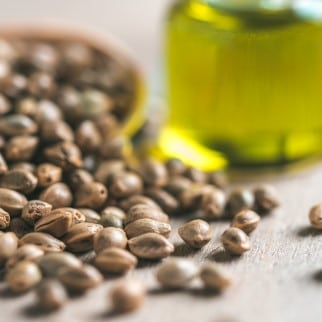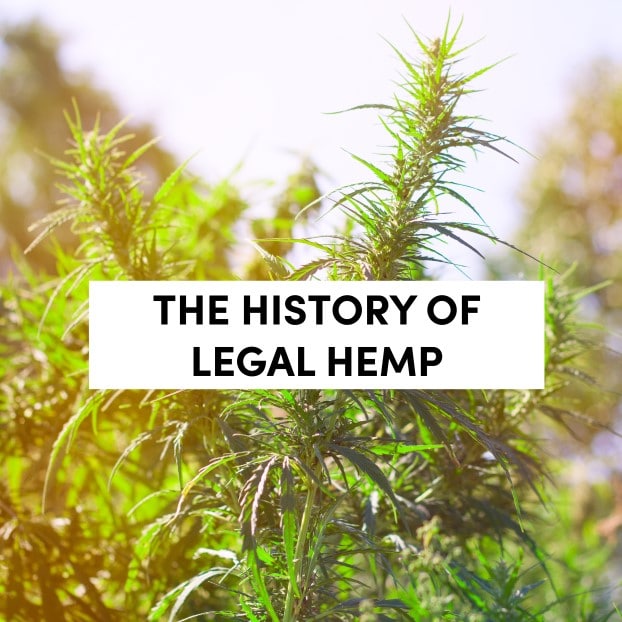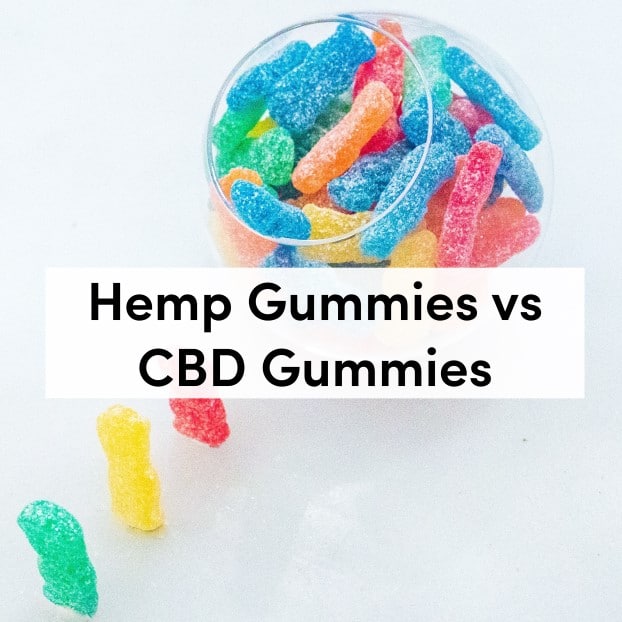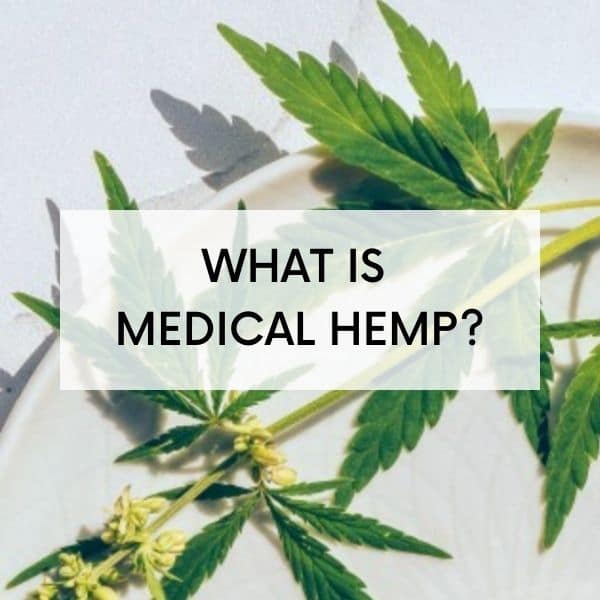A History Of The Hemp Plant And 5 Special Uses

Posted on June 9th, 2021
The hemp plant is one of the most recognized plants on earth. For thousands of years, it’s been cultivated and used for everything from textiles to health and wellness products. In this article, we’ll take an in-depth look at the hemp plant and what it has to offer. Plus, we’ll cover its long and diverse history. Along with some of its more modern applications.
A Brief History Of the Hemp Plant 
Records suggest that we used hemp as far back as 8000BCE in parts of Asia. In fact, we’ve found small amounts of hemp cords in ancient pottery. Plus hemp oil and seeds were well-known components of Chinese food and medicine for thousands of years.
Over the centuries, hemp usage spread through Asia, Europe, Africa, and South America. Finally, it reached North America, sometime during the 17th century. On this continent, early hemp uses included lamp fuel, rope, and paper. Then, in the 18th century, it became a staple crop for the colonies. And a majority of farmers grew this crops. (Little known-fact: George Washington, the first president of the United States, was a hemp farmer!)
What’s behind hemp’s popularity? Well, it’s easily one of the most versatile and functional plants around. It has dozens of different uses, spread across a number of growing industries. And, it’s emerging as a more economical and eco-friendly alternative to many existing products. Let’s look at 5 different modern uses.
1. Paper
Hemp-sourced paper isn’t a new invention. People spent hundreds of year making paper from hemp plants before wood-based paper took over. Actually, experts estimate that, prior to the 19th century, roughly 90 percent of the world’s paper came from hemp. And Marquis Cai Lun, who is often credited with the invention of papermaking, relied heavily on hemp ends in his early products.
When compared to other material, hemp has several advantages. For starters, it has a lower percentage of the compound lignin. This organic polymer is primarily responsible for wood-based paper products’ rigid nature. So, with less lignin, hemp is easier to break down into a flexible, pliable pulp. Also, hemp has higher cellulose concentrations, and that’s one of paper’s main components.
Now, to become paper, wood requires several more processing steps than the hemp plant. It needs to be altered chemically, creating that typical white background. That’s why paper created from a tree needs lots of chlorine bleach. in contrast, hemp pulp naturally creates a much lighter paper color.
Because of this, hemp paper is often produced with eco-friendly practices in mind. Many manufacturers try to limit or remove the chemical agents from the process. For example, they often use soy products as a binder instead of dangerous chemicals like formaldehyde. Overall, hemp paper is a safer, more natural product. And it looks and feels better than wood-based paper.
2. Textiles And Manufacturing
Textiles refer to materials that are manufactured using thin fibers from plants. The hemp plant is surprisingly strong and flexible, making it an excellent textile source. Which may be why hemp-based clothing has become extremely popular in the last decade.
We already have plenty of sources for clothing textiles. Chances are, you’re already familiar with cotton. We produce roughly 27 million tons of cotton every year. And that volume keeps increasing. So why bother with hemp clothing when we already have cotton? Well, it’s because hemp has some advantages when compared to cotton and other clothing.
What’s one of the biggest bonuses? You need a lot less water to grow a hemp plant. In fact, cotton requires roughly twice the amount of land and four times the amount of water to produce the same 2000 pounds of textile fabric as hemp. So, by relying more heavily on hemp, we can preserve land and reduce water waste in the clothing industry.
Even better? You can grow hemp plants without any harmful chemicals or pesticides. that gives this plant a completely natural grow cycle. In contrast, cotton growth is responsible for 25 percent of all the insecticides used in the farming industry.
3. Hemp Plant Building Materials
Did you know that we can use hemp to make bricks, drywall, insulation, and other building materials? Yes, it’s true! In several countries, we’re already using Hempcrete in commercial and residential buildings.
You can produce hempcrete bricks from the core of the hemp plant stalk. (We call it the hemp herd.) This is a natural byproduct created when you strip the stalk. And that means less overall waste. Because you can use the plant’s bulk textiles and paper, then take the leftovers to construct the Hempcrete bricks.
Plus, hemp-based building materials have several natural advantages. They are naturally quite heat resistant (R-value). Traditional concrete has an R-value between 0.1 and 0.2 per inch. But hemp-based bricks have a natural R-value between 2.4 and 4.8 per inch.
This natural insulating property could also make the hemp plant a great alternative to traditional insulators. For example, shredded hemp pulps are rapidly replacing fiberglass as the go-to insulation inside walls and beneath floors. Thanks to hemp’s thermal capabilities, it’s an excellent stand alone building material, and works well when added to existing products.
4. Natural Fuel
The hemp plant is just one of several natural fuel sources that’s mostly ignored by the automobile industry. Right now, there’s simply too much money to be made from fossil fuels. Luckily, the public is becoming more aware of that industry’s downsides. And we’re pushing back for cleaner, safer alternatives. Which is why we may soon see hemp rise to the top as a natural fuel alternative.
While it may not be widespread, the use of hemp for fuel isn’t entirely new. Actually, Henry Ford himself was aware of hemp’s capability. And he believed that it could serve as a safe alternative to petroleum fuel. Unfortunately, petroleum fuel became more popular (and hemp became taboo) during the 20th century. Finally, we’re beginning to remove that taboo and see hemp’s incredible potential.
Now, one of its most obvious fuel advantages is that hemp has a less negative impact on the environment. Because it’s completely renewable, which means we don’t have to worry about depleting our supply. Unlike our dwindling supply of fossil fuels. Plus, the hemp plant can grow in nearly any climate, with minimal water and no dangerous chemicals!
5. A Rich Source Of CBD
Finally, hemp is a well-known source of natural CBD oil. Cannabidiol(CBD) has stepped into the spotlight in recent years as an incredibly effective natural supplement. A number of studies and trials suggest that CBD oil can be used to manage severe pain, even in patients suffering from chronic illness.
Now, marijuana, hemp’s cousin, is also known for its pain-fighting capabilities. The major difference between the two is that most hemp grown today contains less than 0.3% THC. THC is the cannabinoid responsible for the psychoactive properties of marijuana. With hemp, you are able to enjoy natural pain relief. All without the feeling of “being high”.
Many people use CBD oil as a natural source of relief from depression and anxiety. Depression and anxiety are among the most widespread mental disorders in the world. Medical professionals often treat them with dangerous chemical cocktails that can lead to dependency, and ultimately worsen depression and anxiety.
The effect of CBD oil on anxiety is one of its most researched properties, just after pain relief. The majority of studies we see published support CBD and hemp as a safe and natural method of addressing anxiety. A very recent study performed in 2020 indicated that 70 percent of patients noticed a decrease in their levels of anxiety and depression after taking CBD for only 3 weeks.
Bonus Use: Raw Greens 
This shouldn’t come as a surprise, but hemp is still considered a vegetable and is edible. It is not frequently consumed because most farmers grow it specifically for use in the textile or clothing industries. But we are seeing a change in this trend as more people demand healthy, natural, nutrient-rich foods. Hemp as a source of raw greens is a great way to add iron, fiber, and calcium to your diet. It also contains the many different cannabinoids like CBD, which could have health benefits of their own.
An All-Around Great Product
There’s no denying that hemp is one of the most versatile plants on the planet. Whether you put it in the gas tank, use it to sew your shirts or build your home, or just eat it for dinner; it can benefit you, your wallet and the environment!. And, as our body of research grows, we’ll undoubtedly soon be sharing numerous new uses and benefits.






